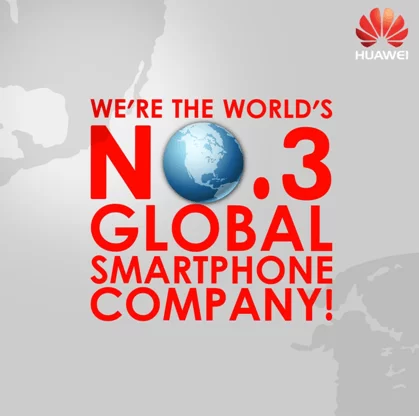Huawei is on the way to success. While 2015 was indeed a pivotal year for Huawei’s rapid ascent, the landscape of the tech industry has undergone significant shifts since then. To offer a more relevant and current perspective, let’s delve into Huawei’s present standing and its evolving position amidst fierce competition.

Huawei Maintaining Market Share in a Crowded Field:
Huawei’s smartphone sales continue to be strong, but the market landscape has become much more competitive. Players like Samsung, Apple, Xiaomi, and OPPO have established themselves as major contenders, with growing brands like Vivo and Relente also vying for market share.
Despite facing this intensified competition, Huawei has retained a loyal customer base and continues to innovate with flagship devices like the P50 Pro and the Mate Xs foldable phone. However, geopolitical factors have impacted their global reach, necessitating strategic adjustments and a focus on specific markets.
Huawei Beyond Smartphones – Diversification and New Frontiers:
Huawei has strategically diversified its portfolio beyond smartphones, venturing into areas like cloud computing, enterprise solutions, and wearable technology. Huawei Cloud, for instance, has emerged as a significant player in the cloud infrastructure market, challenging established giants like Amazon Web Services and Microsoft Azure.
Additionally, Huawei’s investments in research and development in areas like 5G technology and artificial intelligence position them for future growth opportunities. With ongoing advancements in these fields, Huawei has the potential to carve out a niche beyond consumer electronics.
Challenges and Opportunities:
Despite its success, Huawei continues to face challenges. The ongoing geopolitical tensions and trade restrictions have hampered its international expansion, particularly in markets like the United States. Additionally, the rise of alternative operating systems like HarmonyOS presents both an opportunity and a hurdle as Huawei seeks to establish a self-sufficient ecosystem.
Looking Ahead: A Future of Connectivity and Innovation:
Despite the challenges, Huawei’s commitment to innovation and its focus on customer-centric solutions remain key drivers of its success. The company’s continued investments in research and development, coupled with its diversification strategy, hold promise for a future where Huawei remains a major player in the global tech landscape.
In conclusion, while 2015 marked a significant milestone for Huawei, their journey since then has been one of adaptation, diversification, and facing new challenges. By understanding the current competitive landscape and Huawei’s evolving strategies, we can gain a more nuanced perspective on their future prospects and the role they will play in shaping the “better-connected world” envisioned years ago.
